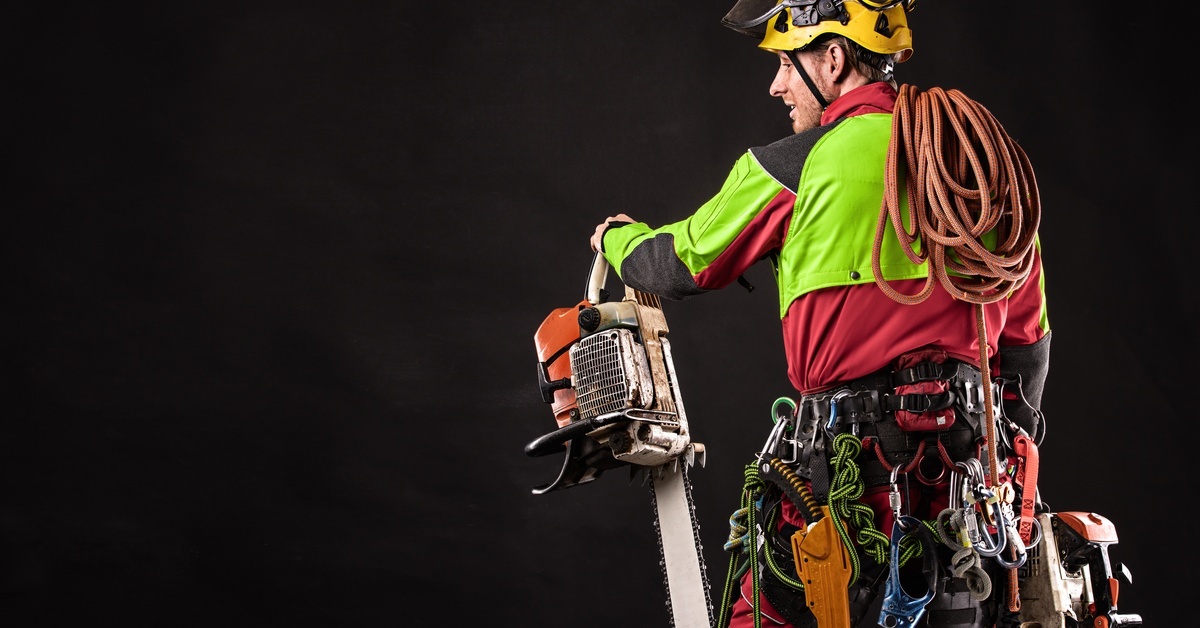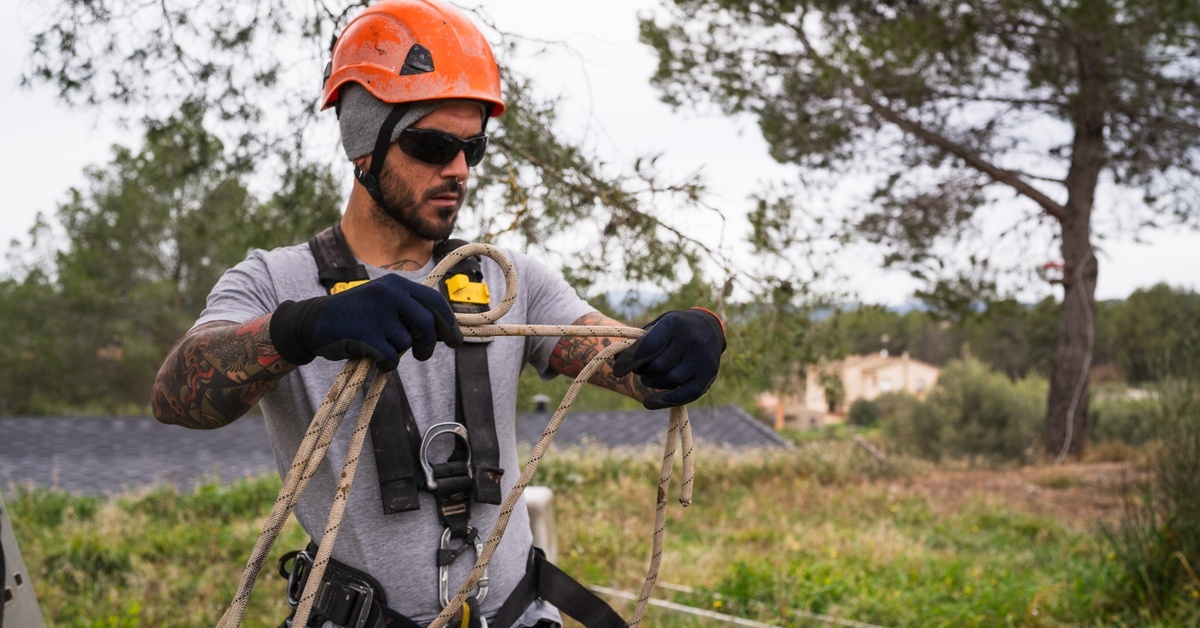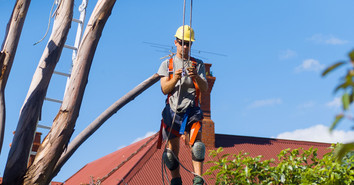Mastering rope management can separate a smooth, productive workday from one tangled in frustration. Picture this: you’re halfway up a tree, only to have your progress delayed by knotted ropes or gear caught in an unexpected snag! Knowing essential rope management techniques is the key to working safely, efficiently, and professionally for arborists.
Rope management protects gear from unnecessary wear, keeps the work zone organized, and allows climbers and ground crews to communicate and collaborate with confidence. The techniques aren’t reserved for seasoned professionals; they’re incredibly beneficial for those just starting out or looking to fine-tune their approach.
If you’ve ever wrestled with stubborn knots, struggled to secure your ropes during climbs, or felt overwhelmed by the sheer volume of rope involved in tree work, this post has you covered. Get ready to explore practical strategies and workable tips to up your rope management game, one technique at a time.
The Basics of Rope Care
Selecting the Right Rope for the Job
Arborists rely on climbing ropes, rigging ropes, and throwlines for different purposes. Rigging ropes help with carrying heavy loads or lowering branches, while arborist climbing ropes prioritize flexibility and strength to support a climber’s weight. Throwlines are lightweight and help to set lines in hard-to-reach spots.
When choosing rope, pay attention to the material (nylon or polyester), diameter, and breaking strength. These factors play a big role in determining how well the rope performs and how long it lasts.
Routine Inspections and Maintenance
Before every climb, take a good look at your ropes. Small signs of damage, such as fraying, discoloration, or broken fibers, could compromise your safety.
Regular cleaning is key to keeping ropes in top shape. Dust, sap, and dirt eventually grind into fibers over time, weakening their structure. Use mild soap and water to clean ropes and allow them to air-dry completely before using them again. Keep ropes away from direct sunlight, chemicals, and rough surfaces to prevent unnecessary wear.

Essential Rope Techniques
Coiling and Stowing Ropes
Properly coiling a rope prevents tangles and makes your workday easier. Start by holding a coil of rope in one hand and using the other to form loops; they should lay flat and not twist. After coiling, secure it with a rope tie or carabiner.
For more convenience, store coiled ropes in a rope bag. This keeps them clean and organized while protecting them from damage while you work. If you’re climbing, keep a small coil clipped securely to your harness so that it’s within reach.
Throwline Management
Throwlines are lifesavers when setting ropes in difficult spots, but mismanagement can turn these tools into a hassle. Lay out the throwline neatly to prevent it from tangling, and use a dedicated throwline storage cube or pouch for extra organization.
When using the throwline, practice controlled throws to avoid getting the line snagged on branches or creating messy knots. Once the job is done, neatly reel the line back into its designated container. This small step saves you a lot of time during the next setup and keeps your workspace free of clutter.
Directional Rope Management While Climbing
Climbing requires constant awareness of your ropes and their position relative to your body and surroundings. Pay attention to how ropes feed through your equipment and keep them clear of branches, tools, or other lines.
Organize your ropes so they don’t loop unnecessarily or twist around the tree. Keeping them in the correct direction helps you climb efficiently and prevents tangles during transitions. Using accessories, such as carabiners or loops, can direct ropes away from trouble spots and keep everything running smoothly.
Rope Handling While Working
Communication Between Ground and Climber
Good communication between the climber and the ground crew can prevent a lot of rope-related mistakes. Always establish clear signals, like tugging on the rope a specific number of times or using simple hand gestures. Voice commands, such as “slack,” “take,” or “hold,” communicate the climber’s needs without confusion.
Consistency matters. Practice these commands before starting a job so every member knows what to expect. Good communication keeps everyone safe by reducing the risk of missteps or misunderstandings.
Avoiding Knots and Snags
No one loves untangling knots. The best way to avoid them is by keeping your ropes organized at all times. Lay them out neatly before you start, and keep excess length coiled or looped until you need it.
If a knot does form, undo it quickly by pulling apart one section at a time rather than yanking forcefully. Rushing the process can tighten the knot and make it harder to resolve. With a little patience, you’ll save time and the integrity of your ropes.
Efficient Rope Retrieval Post-Job
Once the work is done, take a systematic approach to rope retrieval in order to save time and avoid creating a mess. Start by removing ropes one section at a time, coiling them neatly as you go. If knots formed during the job, untangle them on-site to prevent trouble during the next task.
For the sake of efficiency, use color-coded bags or labels to separate ropes by function or length. This method helps you quickly grab what you need for your next task without sorting through a heap of tangled gear.

Advanced Tips for Mastering Rope Management
Practicing Knot-Tying Skills
Knowing your knots can raise your skill level as an arborist. The Blake’s hitch or a bowline are essential for climbing and rigging because they offer reliable strength and easy adjustment. Dedicate time to practicing these fundamental knots until you can tie them quickly and confidently.
Practice in low-pressure environments before applying them in real-world situations. Books, online videos, and even workshops are great resources to help you refine knot techniques and build muscle memory.
Investing in Rope Accessories
Good tools make great work even better. Rope bags keep your ropes clean and ready for use, while carabiners allow for quick and secure attachment points. Splices or rope thimbles reinforce loops and extend rope life by reducing stress at critical points.
Investing in these accessories might seem small, but they add up to a smarter, more efficient approach to rope management.
Final Thoughts…
Learning rope management techniques is a shining opportunity to show your professionalism every time you work as an arborist. When you handle your ropes with care and precision, you set the standard for efficiency, safety, and respect for the craft. Each technique you practice builds your confidence, making your climbs smoother, your gear last longer, and your teamwork better.
Think of rope handling as a way to invest in yourself and your career. By mastering small details today, you’re laying the foundation for bigger achievements tomorrow. Keep refining your techniques, and don’t hesitate to experiment with new tools or approaches. Master the ropes, and the rest will follow.

